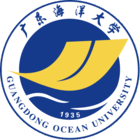详细信息
Annual and Semiannual Cycles of Diurnal Warming of Sea Surface Temperature in the South China Sea ( SCI-EXPANDED收录) 被引量:11
文献类型:期刊文献
英文题名:Annual and Semiannual Cycles of Diurnal Warming of Sea Surface Temperature in the South China Sea
作者:Yan, Yunwei[1];Wang, Guihua[2,3];Chen, Changlin[2,3];Ling, Zheng[4]
机构:[1]State Ocean Adm, Inst Oceanog 2, State Key Lab Satellite Ocean Environm Dynam, Hangzhou, Zhejiang, Peoples R China;[2]Fudan Univ, Dept Atmospher & Ocean Sci, Shanghai, Peoples R China;[3]Fudan Univ, Inst Atmospher Sci, Shanghai, Peoples R China;[4]Guangdona Ocean Univ, Guangdong Key Lab Coastal Ocean Variabil & Disast, Zhanjiang, Peoples R China
年份:2018
卷号:123
期号:8
起止页码:5797
外文期刊名:JOURNAL OF GEOPHYSICAL RESEARCH-OCEANS
收录:SCI-EXPANDED(收录号:WOS:000445188900045)、、Scopus(收录号:2-s2.0-85052466946)、WOS
基金:The SeaFlux version 1.0 data product was downloaded from the website: http://seaflux.org/. Solar radiation was derived from the National Aeronautics and Space Administration (NASA)/Global Energy and Water Cycle Experiment (GEWEX) Surface Radiation Budget (SRB), release 3.0 data set (https://gewex-srb.larc.nasa.gov/). Tropical Rainfall Measuring Mission precipitation data were provided by the Goddard Distributed Active Archive Center (http://trmm.gsfc.nasa.gov/data_dir/data.html). This study is supported by the National Natural Science Foundation of China (grants 41606017, 91428206, 41730536, 41576022, and 41621064), the Program of Shanghai Academic/Technology Research Leader (17XD1400600), the Foundation of Guangdong Province for Outstanding Young Teachers in University (YQ2015088), and the Scientific Research Fund of the Second Institute of Oceanography, SOA (grant 14285).
语种:英文
外文关键词:diurnal warming of sea surface temperature; annual cycle; semiannual cycle; South China Sea
外文摘要:Based on the SeaFlux data set, an empirical parameterization, and a one-dimensional ocean mixed-layer model, the annual and semiannual cycles of diurnal warming of sea surface temperature (dSST) in the South China Sea (SCS) are examined. The amplitude of the annual cycle is greater than 0.1 degrees C, and the annual cycle reaches its maxima in April/May/June in most areas of the SCS, while the amplitude of the semiannual cycle of dSST increases from north to south with the month of its maxima changing from February to March along a northwest-southeast axis. Relative to the amplitude of the annual cycle of dSST, the semiannual cycle is of much smaller amplitude north of 17 degrees N, but of comparable or larger amplitude south of 17 degrees N. The annual (semiannual) cycle of wind speed is the most important factor for the annual (semiannual) cycle of dSST. The annual (semiannual) cycle of wind speed drives the annual (semiannual) cycle of dSST primarily by influencing oceanic vertical turbulent mixing. Aside from these basin-scale features, the dSST annual and semiannual cycles demonstrate robust mesoscale features in the lees of hills/islands as a result of sheltering from the monsoon. Plain Language Summary Based on the SeaFlux data set, an empirical parameterization, and a one-dimensional ocean mixed-layer model, the annual and semiannual cycles of diurnal warming of sea surface temperature (dSST) in the South China Sea are examined. The annual cycle of diurnal warming is relatively large in the whole South China Sea, while semiannual cycle increases from north to south. Relative to the amplitude of the annual cycle of dSST, the semiannual cycle is of much smaller amplitude north of 17 degrees N, but of comparable or larger amplitude south of 17 degrees N. Aside from these basin-scale features, the dSST annual and semiannual cycles demonstrate robust mesoscale features in the lees of hills/islands. The annual (semiannual) cycle of wind speed is the most important factor for the annual (semiannual) cycle of dSST. The annual (semiannual) cycle of wind speed drives the annual (semiannual) cycle of dSST primarily by influencing oceanic vertical turbulent mixing.
参考文献:
![]() 正在载入数据...
正在载入数据...


